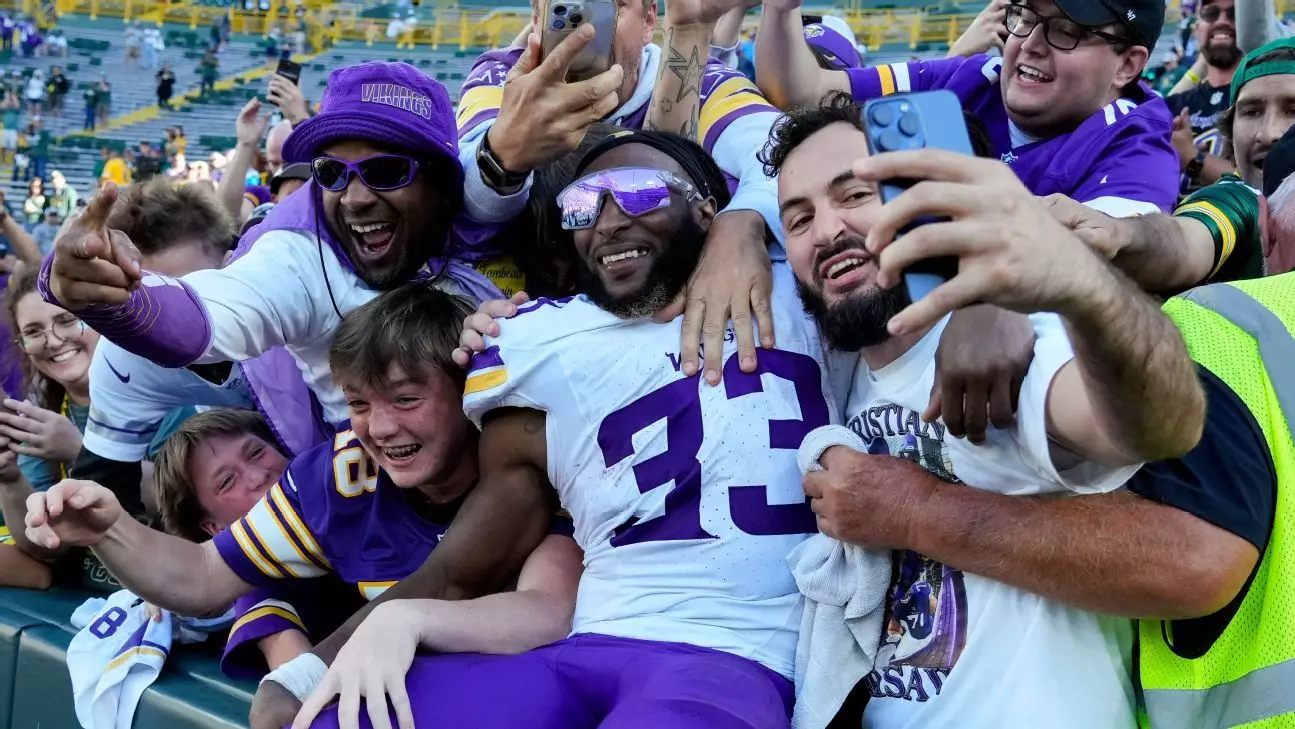The Minnesota Vikings are currently at a pivotal crossroads as they evaluate their backfield options for the upcoming season. With the team coming off a transition period marked by changes and injuries, the discussion primarily revolves around veteran running back Aaron Jones. The organization has begun to make it clear that they wish to avoid repeating the high-volume usage that led to Jones setting career highs in several categories during his first season with the team. As the Vikings look to bolster their roster, it’s crucial to analyze the implications of these decisions and the future of their running game.
Jones’ Impact and Usage: A Double-Edged Sword
In 2024, Aaron Jones had an impressive season, racking up 1,138 rushing yards and a total of 1,546 yards from scrimmage. He performed admirably, playing through various injuries, which established him as a durable asset for the Vikings. However, moving forward, Coach Kevin O’Connell has indicated a desire to reduce his workload. This change could benefit both Jones—who may thrive under lighter usage—and the overall health of the team’s running game. O’Connell emphasized a return to a more balanced approach, potentially integrating a committee system rather than relying solely on one feature back.
While Jones’ statistics paint a picture of effectiveness, the increased snap percentages could also have adverse effects. Overworking a player can lead to fatigue and subsequent injuries, especially for someone approaching 30. The franchise needs to find the right blend of maximizing Jones’ productivity while preserving his longevity, particularly if they plan to keep him in the mix for multiple seasons.
The Vikings’ exploration of potential running back options reflects the need for depth in their roster. The search for an emerging talent through the draft becomes increasingly paramount, particularly given the constraints they face in terms of draft capital. As the Vikings hold the fewest projected picks in the NFL, the urgency to draft wisely is amplified. Identifying a younger prospect who can share the load with Jones may provide the ideal solution to balance the backfield, especially if Jones’s days of being a workhorse are numbered.
Several prospects are garnering attention, including young talents like Ashton Jeanty and Omarion Hampton. Bringing in a fresh face who possesses burst or versatility could invigorate the running game. The Vikings’ previous attempts to draft running backs haven’t quite materialized yet, further emphasizing the urgency for a successful selection in the upcoming draft.
Compounding these considerations is the evolution of the Vikings’ offensive strategy under O’Connell. Known for building schemes around star receiver Justin Jefferson, the team’s reliance on designed runs has been noticeably low, ranking second-to-last in the league over the past two seasons. However, with a quarterback transition on the horizon—from Kirk Cousins to J.J. McCarthy—there’s an opportunity to redefine not just the running back usage, but the entire offensive philosophy.
To support a young quarterback like McCarthy, having a dynamic running game must be prioritized. O’Connell has already begun to address this by increasing the number of designed runs in 2024, resulting in marked improvement. This shift indicates a strategic pivot that could make the backfield’s role more significant in the offense moving forward.
As Jones approaches free agency, the Vikings must weigh the pros and cons of retaining him against the backdrop of their evolving roster and needs. Although the thought of Jones returning to Minnesota is appealing, he may no longer fit the mold of an every-down back that he once was. A committee approach could be more prudent, allowing the team to not only mitigate the risk of overuse but also incorporate potentially explosive younger talent.
The focus on carefully assembling a backfield that can share duties while maintaining high performance could elevate the Vikings as they navigate an unpredictable NFC North landscape. Ultimately, the decisions made in the coming months regarding Jones and the overall backfield strategy will play a crucial role in determining the Vikings’ success in the seasons ahead. The Vikings are addressing not just the needs of the present but also laying the groundwork for a revitalized and resilient future.

